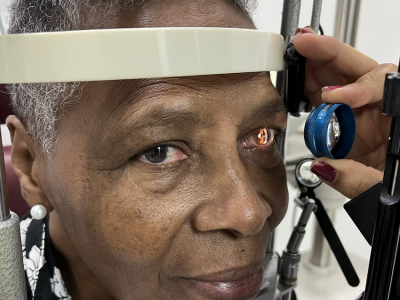
Myths and truths about glaucoma
21 March 2024
Glaucoma is a chronic eye disease that affects the optic nerve and can lead to vision loss. It is often called "the silent thief of sight" because it usually progresses without obvious symptoms until vision loss is significant. Given its impact on quality of life, it is crucial to distinguish between myths and truths about glaucoma for a better understanding and management of this disease. Here we are going to demystify some common misconceptions.
Myth 1: Only older people suffer from glaucoma
Truth: While it is true that the risk of glaucoma increases with age, this disease can affect people of all ages, including children and young people. In fact, congenital glaucoma can be present from birth, and juvenile glaucoma can manifest during childhood or adolescence. Therefore, it is crucial that people of all ages have regular eye exams to detect and treat glaucoma early.
Myth 2: Glaucoma only occurs if there is high eye pressure
Truth: Although elevated intraocular pressure is a major risk factor for developing glaucoma, not all people with glaucoma have high eye pressure, and not all people with high eye pressure will develop glaucoma. There are different types of glaucoma, including open-angle glaucoma, where high eye pressure is a factor, but there are also types such as closed-angle glaucoma, where eye pressure can be normal or even low.
Myth 3: Glaucoma always has obvious symptoms
Truth: Unfortunately, glaucoma is often asymptomatic in its early stages. Symptoms may not appear until the disease is advanced and vision loss is noticeable. For this reason, regular eye checkups are essential, especially if you have any risk factors such as a family history of glaucoma, advanced age, high eye pressure, or certain medical conditions such as diabetes.
Myth 4: Glaucoma is curable
Truth: There is currently no cure for glaucoma. However, with early diagnosis and appropriate treatment, it is possible to control the progression of the disease and preserve vision. Treatment usually includes eye drops, oral medications, laser procedures, or surgery, depending on the severity of the glaucoma and the individual response to treatment.
Myth 5: Glaucoma only affects the eyes
Truth: While glaucoma is an eye disease, it can also affect other aspects of your health. For example, vision loss related to glaucoma can increase the risk of falls and injuries, which in turn can affect mobility and quality of life. Additionally, studies have suggested that glaucoma may be associated with an increased risk of depression and impaired cognitive function.
In summary, glaucoma is a serious and chronic eye disease that can affect people of all ages and does not always have obvious symptoms. Early detection, appropriate treatment, and regular follow-up with an ophthalmologist are essential to controlling glaucoma and preserving vision. Breaking myths and understanding the truths about this disease is essential to promoting glaucoma awareness and prevention.











